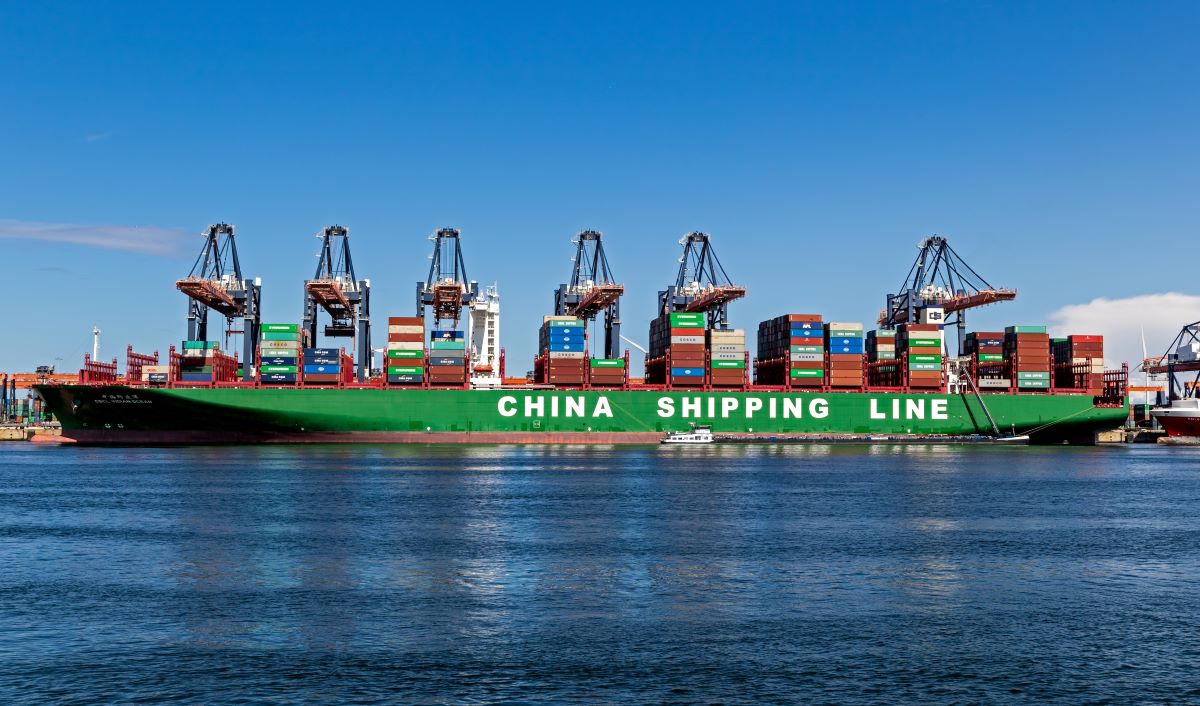The Chinese shipbuilding industry is significant not only for the domestic economy but also for the global maritime trade. According to the nation’s Ministry of Industry and Information Technology, in 2023, China’s shipping output surged 11.8% over the year to 42.32 million deadweight tons, thus accounting for 50.2% of the global shipbuilding market share. Newbuilding orders were even up 56.4% last year totally in 66.6% market share.
Li Yanqing, secretary-general of the Beijing-based China Association of the National Shipbuilding Industry, highlighted that the country is technologically ahead of South Korea and Japan in the construction of high-value-added ships, such as liquefied natural gas (LNG) carriers and offshore wind turbine installation vessels.
Shipbuilding is about to witness a massive transformation in alignment with the International Maritime Organisation’s (IMO) pledge of net-zero emissions by 2050. Consequently, China is also concentrating its efforts on adopting cleaner fuel for its shipping industry.
The nation aims to build over 50% of global vessels powered by lower-carbon fuels such as LNG and green methanol by 2025 and dominate the international green shipbuilding market by 2030. Capturing global growth trends, China is already a leader in producing solar panels, electric vehicles (EV), and EV batteries.
China’s action plan for green shipbuilding
China is making serious efforts to develop low-carbon vessels and adopt efficient transformation in shipbuilding as a part of its 14th Five-Year Plan (2021-2025). Some of the policies in the plan have significantly reduced shipping sulfur oxide (SOx) and particulate emissions. At present, about 15.6% of newly built ships from China are powered by cleaner fuels.
This week, SAIC Motor Corp. Ltd.’s first custom-built, ocean-going car carrier ship, known as roll-on/roll-off (ro-ro ship), began its first voyage from Shanghai to Europe. It is the world’s largest ro-ro vehicle transport vessel partly powered by sustainable fuel. This ship has a dual-fuel system that utilises LNG and diesel, thus reducing carbon emissions by 30%.
Additionally, SAIC vouched to spend $1.4 bn to build 12 fossil LNG-powered ships to export cars.
According to a Chinese daily, in the first half of 2023, Hudong-Zhonghua Shipbuilding delivered nearly nine large LNG carriers, with new orders of over 20 bn yuan ($2.81 bn). Meanwhile, Henan Diesel Engine Industry, a subsidiary of China State Shipbuilding Corporation developed and launched its methanol fuel engine. The first methanol dual-fuel low-speed engine produced by China is likely to be launched in 2025.
Also last year, COSCO Shipping launched the world’s first 700 TEU pure electric container ship. The 120-meter-long vessel has a fully electric drive and is able to swap battery packs en route.
A major leap towards establishing China’s role in the global clean shipbuilding landscape will potentially be the Green Shipping Corridor Implementation Plan between the US and China. The plan is likely to deploy lower- or zero-carbon box ships between Shanghai, Los Angeles, and Long Beach by 2025, one of the busiest sea routes in the world. The plan is backed by major container shipping lines such as Maersk, CMA CGM, COSCO Shipping Lines, and ONE.
At the same time, the Port of Shanghai has also established a “green shipping corridor” with Sri Lanka’s Hambantota Port, which was financed and built by China.
Fragmented incentives and geopolitical tensions could be roadblocks
While China has made great progress in advancing its quest for green shipping dominance, there are certain shortcomings. It is noteworthy that one of the major challenges facing the Chinese shipping industry is that zero-emissions fuel is not cost-competitive currently. Hence, incentives play a major role in encouraging shipbuilders to opt for green shipping. However, the incentives for shipping decarbonisation aren’t evenly defined in China and have not been adequately promoted across the nation.
Furthermore, research by the National Social Science Fund of China states, “China urgently needs to introduce a market mechanism of carbon emission trading into shipping decarbonisation.” This is because several countries are adopting carbon reduction measures based on market mechanisms for regulating GHG emissions and this is also what the IMO recommends.
China is also concerned that the emission reduction measures would lead to a significant increase in maritime transport costs. Moreover, the green transition of shipping heavily depends on international cooperation, and industry analysts believe that geopolitical turmoil can hamper the pace of this development. Mark Harper, UK Secretary of State for Transport believes that China must play a challenging role on this front.
“We are not going to deal with climate challenges if China is not an integral player,” asserted Harper.










 Australia
Australia China
China India
India Indonesia
Indonesia Japan
Japan Malaysia
Malaysia Philippines
Philippines Singapore
Singapore South Korea
South Korea Taiwan
Taiwan Thailand
Thailand Vietnam
Vietnam Germany
Germany Hong Kong
Hong Kong USA
USA Switzerland
Switzerland Singapore
Singapore
 United Kingdom
United Kingdom







